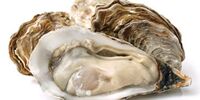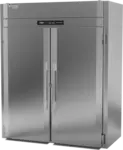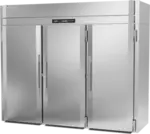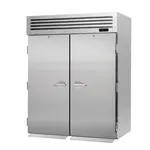Lasagna is a celebrated dish across American households. Its popularity is not just centered around home-cooking, it is also a popular meal served in traditional Italian and various upscale restaurants. Originally believed to be a product of Naples, Italy, where the tradition was started in the middle ages, the dish enjoys considerable popularity across the world now. Lasagna starts off as a layer of flat, wide pasta spread across a baking dish and is topped with alternating layers of tomato sauce, ground beef (or meat sauce), cheeses such as ricotta and parmesan, and seasonings like garlic, oregano and basil, all interspersed with layers of pasta in between. Mozzarella may be sprinkled as the top layer to give the dish a cheesy, stringy texture. After being baked in the oven, the dish is cut into personal-sized squares and served.
Lasagna is a dish best served hot. However, it is not always possible to prepare all the ingredients and serve it to order. Freezing lasagna is a simple way of preparing the dish for guests and saving time before the meal is served. When the dish is cooked and then frozen, it may not always taste the best when reheated, so it is vital to understand the best practices to freeze the culinary favorite. One of the things that gets in the way of freezing and reheating lasagna is the cheese, which releases oils when reheated and it is an easy tell that the lasagna has been frozen when it comes out greasy out of the oven. So the question arises - how to freeze lasagna?
Freezing Cooked Lasagna: The most common way cooked lasagna is saved for later is by freezing it. It is essential that the casserole is cooled down to room temperature to get rid of any moisture deposits around the top of the dish. It helps if the food is transferred to an appropriately sized pan and covered with plastic wrap to prevent ice crystals forming in the sauce and moisture-laden pasta. An additional layer of aluminum foil helps cover the dish and allows for quicker heat dissipation, once it is placed in the freezer. The quicker the lasagna freezes, the lesser chance of it becoming icy. If ice crystals are allowed to form during the freezing process, the lasagna will taste mushy and oily. This can easily be prevented by appropriately cooling down the dish to let the steam escape and then placing it in the freezer.
Freezing Uncooked Lasagna: If you have the time to do the prep work for freezing uncooked lasagna beforehand, it is best to use no-boil pasta. The layers for the casserole can be arranged as normal and the lasagna can be frozen until you are ready to bake. It is better to use no-boil pasta in this case rather than boiling the flat noodles because boiled pasta will result in the noodles becoming soggy and unpalatable. The rest of the process remains the same as cooking fresh lasagna - layers of meat, cheese, sauce, and pasta can be arranged in a baking pan and then covered with plastic wrap, aluminum foil and put away until you are ready to bake and serve.
How to Cook Frozen Lasagna

Once frozen, it is not too difficult to cook lasagna. You can remove the prepared frozen lasagna from the freezer the night before you intend to serve it and place it in the refrigerator to thaw. On the day of serving, take the lasagna from the fridge and place it in a spot where it can reach room temperature for about half an hour. Once it has been prepped for baking, remove any plastic wrap and cover with foil to bake the lasagna at 375 degrees Fahrenheit until it is cooked properly. This process usually takes about an hour to complete. Once the dish has been cooked thoroughly from the inside, you can remove the aluminum foil and let it bake for 15-20 minutes to caramelize the top and help it achieve a golden brown color.
How Long to Cook Frozen Lasagna
Cooking frozen lasagna depends on the size of your prepared dish and how tall the layers are. Once it has reached room temperature and the plastic wrap has been removed along with any moisture that has formed on the top, it is a fairly straightforward process to cook through. Ideally, the lasagna would spend between 75 and 90 minutes in the oven to achieve a fresh-to-taste texture. Do remember to account for the overnight thawing inside the refrigerator that helps the pasta layers retain their structural integrity without becoming mushy.
How to Make Lasagna to Freeze
As we talked about earlier, cooked noodles have a tendency to get mushy when thawed and reheated. If your intention is to arrange the lasagna before cooking, it is best to use no-boil noodles since they don’t absorb or release much moisture when cooked after being frozen. There are a number of lasagna recipes that you can apply this principle to - whether your lasagna uses the classic arrangement of alternating meats and cheeses, or takes on a modern take with experimenting with vegetables and vegan products. In fact, some award-winning lasagna recipes use no meat at all! Whatever your take is on this Italian classic, the most important aspect to making lasagna to freeze is to minimize the amount of moisture present in the dish before it is ready to be frozen and rapidly freezing it to avoid ice crystals from forming. Another important aspect to consider is that if you are topping the casserole with mozzarella, it may be a good idea to add it right before baking so that the cheese tastes fresh and does not release oils that might make your dish greasy.
Not only is lasagna Garfield the Cat’s favorite food, it is a tradition among many households across the world. Since it is made to serve multiple guests and family members at the same time, there is often food left over. Using our tips, you can freeze lasagna so that the next time you reheat the leftovers, it tastes as good as fresh. Properly frozen lasagna should last at least three months in the freezer. Once the extra moisture has been taken care of, it should be ready to bake. For some additional cheesiness, sprinkle some extra mozzarella on top before placing it in the oven!














